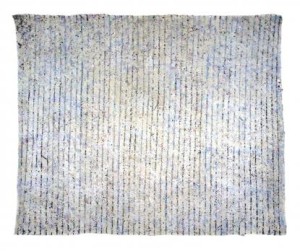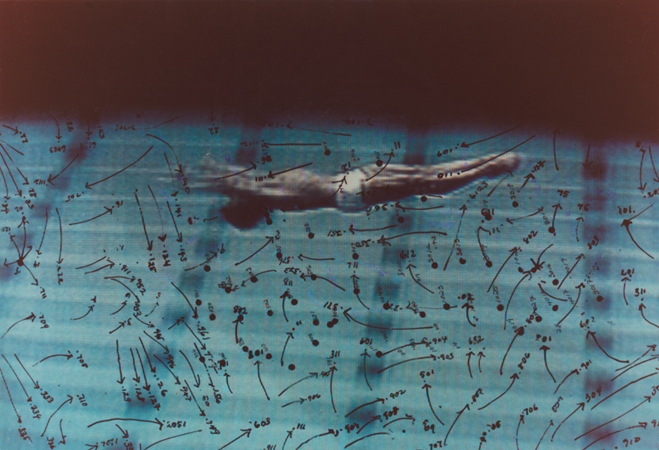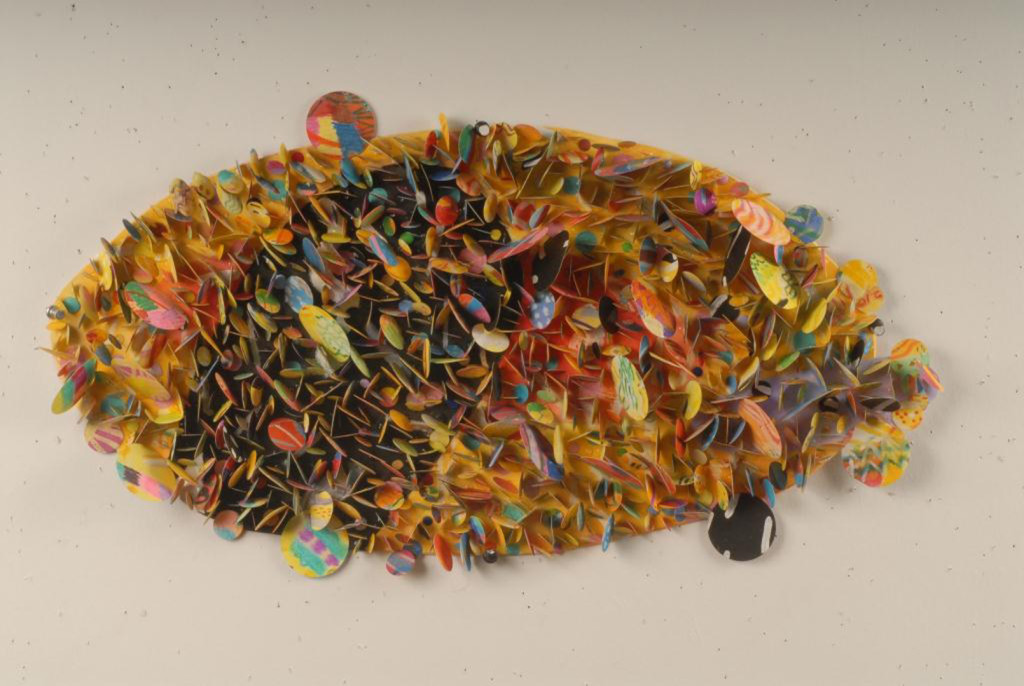
THIS WORK IS IN THE COLLECTION OF THE STUDIO MUSEUM, HARLEM
Feast Day of Iemanja II, 1980.
About:
World renowned abstract artist Howardena Pindell was born on April 14,1943 in Philadelphia, Pennsylvania. Pindell became interested in art at an early age when she began taking art classes on Saturdays. She started out as a figurative painter. Pindell received her B.F.A. degree in painting from Boston University’s School of Fine and Applied Arts in 1965, and her M.F.A. degree from Yale University’s School of Art and Architecture in 1967. Pindell has two honorary doctorates, one from the Massachusetts College of Art and one from Parson School of Design in New York.
 Untitled # 4, 1973.
Untitled # 4, 1973.
Pindell began her career in the art world as the first African American Associate Curator of Prints and Illustrated Books at the New York Museum of Modern Art, a position she held for twelve years. She rose from Curatorial Assistant to Associate Curator during that time. In 1979, Pindell began a new career as Associate Professor of Students at State University of New York at Stony Brook.

Katrina Foot Prints Drawn, 2011.
Pindell’s earliest drawings, composed of a patterned sequence of words and numbers on graph paper, suggest post minimalism as a major ingredient in her abstractions. In the 1970s, Pindell developed a collage technique using small circles hand punched from sheets of blank or printed paper. After numbering each one individually, she pasted them on sheets of punched and un-punched paper so that they floated on surfaces at once porous and solid. In the 1980s, she moved to photo-based collage, video and relief paintings with intensely political subject matter. Pindell has traveled extensively to Africa, Asia, Europe, Russia, Latin America and theCaribbean, lived in Japan for seven months and in India for four months. She uses these journeys and experiences as inspiration to integrate her own history as content for the autobiographies of her life. Between 1995and 1999, Pindell taught at Yale University as a visiting professor. From2003 to 2006, she served as Director of the MFA Program at Stony Brook University. Pindell is currently a full Professor of Art at Stony Brook University.

Sweat Shop, 2005-2006.
Pindell’s belief that the arts community should become more inclusive of women and minorities sparked a revolution in her work. She published groundbreaking studies that document the lack of representation of artists of color through racism, censorship and violence.
Her works are in the collection of the Metropolitan Museum of Art, New York, the Museum of Modern Art, the Whitney Museum of American Art, the Yale Art Museum, New Haven, the Fogg Art Museum, Harvard University, and the Rhode Island School of Art Museum. Pindell is also an accomplished writer; a book of her writings, The Heart of the Question, was published in 1997.
(from blog Betti Pettinati-Longinotti, december 2011)

Video Drawing: Swimming 1973-1976.
Feminist Artist Statement
One of my first one-person exhibitions was held at AIR Gallery, the first women’s cooperative at 97 Wooster Street in New York City. The New York art world was more rigidly and solidly white and male at the time than it is now and this condition was being resisted. I developed a number of tools for inward looking, personal assessment through the women’s movement’s consciousness raising processes in order to understand how racism and sexism work within the art community as well as the community at large. I found my true voice through the African American movement but received my training wheels in the women’s movement in the late 1960’s and early 1970’s. I feel that this is true because I was shy and did not have my original family and community roots in the black community in New York City, but in Philadelphia. I was invited by the white feminist community to join them, whereas the African American community in general at the time was highly critical of abstract African American artists. My use of odd materials also came through the influence of work that I saw exhibited within the feminist community. The materials I used included powder, perfume, glitter, thread and sewing sequins. African influences came by way of seeing loose hanging textiles, both here and in Africa. I saw nails in nkisi sculpture. I also was aware of a kind of stenciling and sewing together of loose fabrics as well as having a very dense and energetic surface tension in my paintings and works on paper.

